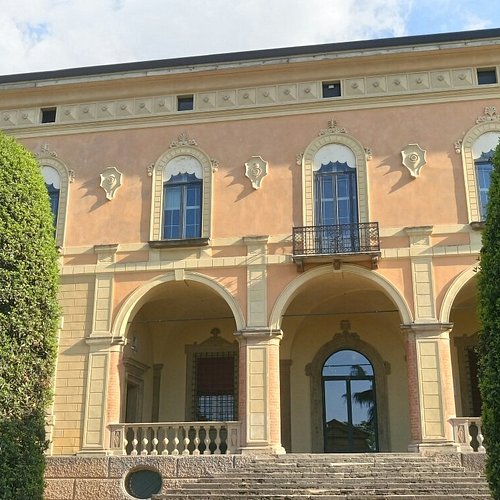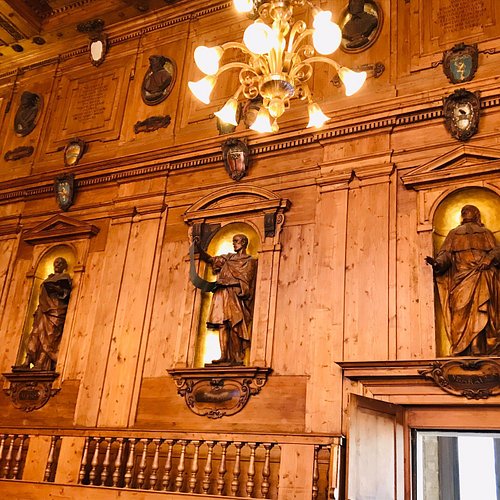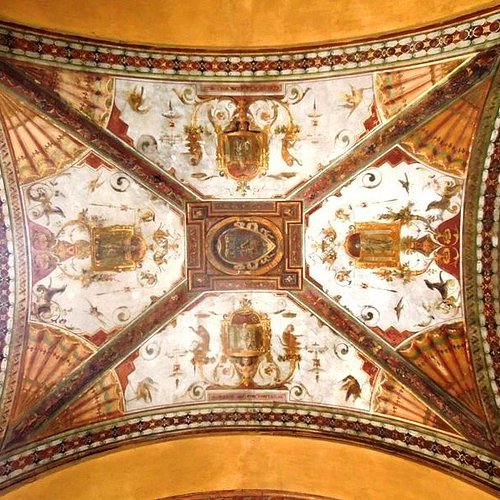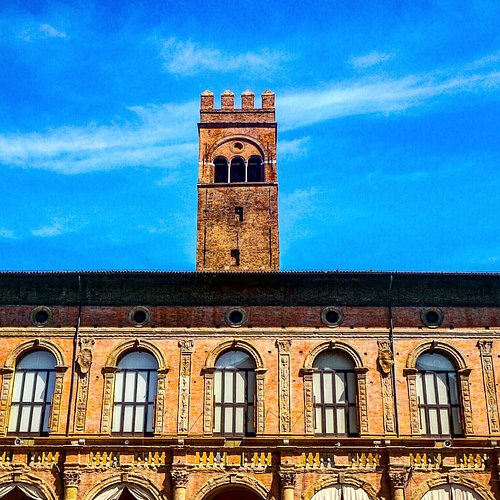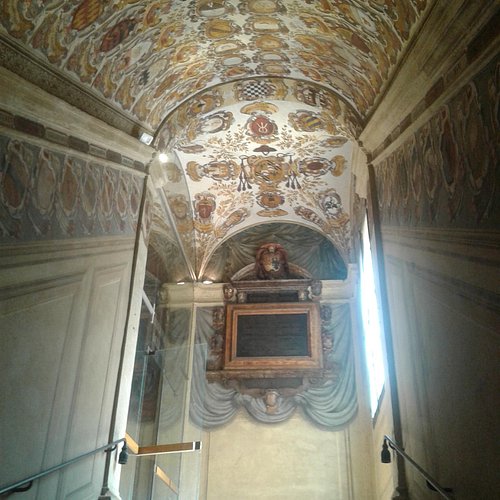Top 10 Architectural Buildings in Bologna, Emilia-Romagna
While crowds of tourists fill Venice, Florence and Rome, Bologna remains relatively quiet in comparison. This medieval university town is charming, historic and fun to explore… and you'll find Bologna's local cuisine is light-years away from the American deli meat bearing the city's name.
Restaurants in Bologna
1. Palazzo Magnani
2. Villa Guastavillani
3. Palazzo Comunale
Overall Ratings
4.5 based on 494 reviews
Reviewed By asiyahnoemik - Pula, Croatia
The beautiful atmosphere of the main town square can be attributed to the Palazzo d'Accursio. The beautiful atmosphere was evoked by the famous musician Luccio Dalla in his unforgettable song Piazza Grande. The Palazzo D’Accursio or Comunale, located in the center of Bologna in Piazza Maggiore, is one of the most important buildings in Bologna, which has been the seat of the city since 1336. Now is the city's Town Hall. A significant building for the city of Bologna, rich in history. The earliest structure of the Palazzo d'Accursio originally began as the residence of the jurist Accursius, but over time, it was incorporated and expanded to include adjacent buildings to house civic offices. In 1336 it became the seat of the Anziani ("Elders"), the highest magistrates of the commune, and then the seat of the government. In the 15th century it was refurbished under the designs of architect Fioravante Fioravanti, who added the Clock Tower (Torre d'Accursio). The façade features a portcullis and a Madonna with Child, a terracotta by Niccolò dell'Arca (1478) in the upper section. Over the portal is a large bronze statue of Bolognese Pope Gregory XIII (1580). A bronze statue of Pope Boniface VIII, once here, is now in the Medieval Museum. Inside the complex it is possible to visit, climbing the sixteenth-century cordoned staircase attributed to Bramante, up to the Hall of the Communal Council, on the first floor, where the Bolognese Senate met, and contains a gallery ceiling frescoed with Baroque-style quadrature by Angelo Michele Colonna and Gioacchino Pizzoli (1675–1677). The palace is also home to the Civic Art Collection, with paintings from the Middle Ages to the 19th century, the Museo Morandi, with the works by Giorgio Morandi, and the Biblioteca Salaborsa, the town libraries.
4. Teatro Anatomico
Overall Ratings
4.5 based on 1,401 reviews
Reviewed By ColinNY
A beautiful room, and the portraits and statues look down and watch. Galen, Hippocrates and others. There is a peace and solemness, as you sit where students watched and learned, centuries ago.
5. Palazzo Sampieri Talon
6. Portico del Pavaglione
Overall Ratings
4.5 based on 147 reviews
Reviewed By asiyahnoemik - Pula, Croatia
Arriving in Bologna we were delighted with the beautiful architecture of the streets enriched with Portici ( Arcades ), which makes this city even more charming. The arcades of Bologna (Portici), almost 40 km long, make the city of Bologna unique in the world as a UNESCO World Heritage Site. Since 1100, when the growth of the University has pushed to invent a new urban space, the arcades have become a place, at the same time public and private, of sociability and commerce, an open-air lounge that is a symbol of Bolognese hospitality. In 1288 with a Statute, the Municipality of Bologna established that all new houses must be built with a masonry portico and existing ones that lacked them were required to add it. Born and still remain as private property for public use, they are an identifying element of the Felsine capital, as well as a reference point for a sustainable urban lifestyle, in which religious spaces, civil buildings, commercial centers and all social classes are perfectly integrated. The arcades in Bologna offered and offer shelter from the weather and the sun, allowing you to walk the roads in any weather. Furthermore, they constituted and also constitute a means for the expansion of commercial and artisan activities. Among many Portici stands out for its beauty Portico del Pavaglione. Portico del Pavaglione, which extends from Via De 'Musei to Via Farini, flanking Via dell'Archiginnasio and Piazza Galvani. The domestic people love strolling under this elegant portico lined with high-end shops. It is 139 meters long and features 30 arches. Along the way, we will find the Archiginnasio, the first unified seat of Bologna's Studio (University), built in the mid-16th century. The portico owes its name to the Piazza del Pavaglione (now Piazza Galvani) where the silkworm market was held (a pavajon in the Bolognese dialect means Pavilion, there was a pavilion to shelter the cocoons when Bologna was the site of a thriving silk industry). At the end of Portico del Pavaglione is a historic cafè of Bologna, Caffè Zanarini.
7. Fontana del Nettuno
Overall Ratings
4.5 based on 2,605 reviews
Reviewed By Sylvain54321 - Lugrin, France
This is a lovely and monumental statue, well located on the main square of the historical center. It has an Italian flavor with the kinky mermaids at the bottom. It is a great start to visit the center, or as a meeting point.
8. Palazzo del Podesta
Overall Ratings
4.5 based on 235 reviews
Reviewed By asiyahnoemik - Pula, Croatia
On the beautiful Piazza Maggiore next to Basilica di San Petronio and the beautiful Palazzo d'Accursio (or Palazzo Comunale) is the charming Palazzo del Podestà, makes a wonderful atmosphere throughout the square. The Palazzo del Podestà was erected in 1200 as a public building and a seat of power, the seat of the local podestà, the various functionaries of the commune. It is an architecturally impressive complex which includes two corridors that cross under the Voltone del Podestà. Overhead rises the Torre dell'Arengo with its bell that was used to summon the population in extraordinary moments. In 1453 Aristotile Fioravanti replaced the bell and reconstructed the original Gothic façade in the Renaissance style by order of Giovanni II Bentivoglio. Voltone del Podestà is decorated with terracotta statues set in 1500 with the figures of the city's protective saints: San Petronio, San Procolo, San Domenico, and San Francesco. The interesting thing is that under the Voltone del Podestà there is an extraordinary acoustic effect where you can stand under the opposite corners of the arch and hear each other clearly at a whisper. In the 16th-18th centuries the Palazzo was used as theatre. The Palazzo del Podestà proved too small to accommodate the large numbers of townspeople who turned out to participate in the city governance. As a result, a mere 40 years after its construction, the Palazzo Re Enzo was built alongside it. The Palazzo del Podestà is a long building, with a large hall on the upper floor. In the 20th century it was frescoed by Adolfo de Carolis. The lower floor is a double open arcade, through which today pass two lanes of shops.
9. Archiginnasio di Bologna
Overall Ratings
4.5 based on 1,931 reviews
Reviewed By 126marivicd - Venice, Italy
We visited the anatomical theatre, the library, and looked around the hallways. Wow so wonderful!!! I cannot imagine how an opulent university like this could have already existed in the 9th century. I could just imagine how students were taught during those days and how prestigious it must have been to graduate from this place. Amazing place!!! My tip is for you to visit the minute it opens so you can have the anatomical theatre all for yourself and get wonderful photos. The hallways and ceilings are also picture perfect. Be ready for an interesting and well spent time.
10. Palazzo Re Enzo
Overall Ratings
4.5 based on 229 reviews
Reviewed By asiyahnoemik - Pula, Croatia
In the beautiful Piazza del Nettuno there is an interesting and beautiful palace, Palazzo Re Enzo. It takes its name from Enzo of Sardinia, Frederick II's son, who was prisoner here, from 1249 until his death in 1272. The palace was built between 1244-1246. as an extension of the nearby Palazzo del Podestà, which had proven insufficient for the exigencies of the Commune of Bologna. It was therefore initially known as the Palatium Novum ("New Palace"). The historical story is extremely interesting but at the same time very sad. Enzo was an illegitimate son of the Hohenstaufen emperor Frederick II, who appointed him 'King of Sardinia' in 1238. He played a major role in the wars between Guelphs and Ghibellines in the creation of Imperial kingdoms of Italy. Enzo was captured 1249 by the Guelphs at the Battle of Fossalta, and after a short stay in Anzola he was moved here, where he remained until his death. Enzo was allegedly left free within the palace by day, but by night he was kept into a cage hanging from the ceiling. He was also allowed to meet women, it is mentioned that he had three daughters, but a legend talks about a fourth son he had with a peasant woman, Lucia di Viadagola. Subsequent history is extremely important and interesting. The son was called Bentivoglio, from the words "Amore mio, ben ti voglio" that he said to his beloved (meaning "My love, I'm fond of you"), and he would be the ancestor of the Bentivoglio family, later rulers of Bologna. The interior of the Palace is beautiful. At the centre of the colonnaded courtyard, there is an ancient sandstone well, while on the right-hand side you will find the ancient Chapel of St. Mary of Prisoners, which was recently restored and decorated by British artist David Tremlett. On the first floor from the loggia, the Salone del Podestà is accessed through a covered passageway and a majestic solid wood door. The spacious Salone del Podestà, which was once a courtroom, was used as a Public Theatre between 1581 and 1767 (the second version of the Euridice was performed here in 1616) and later became a court for ball games. Beautiful Sala re Enzo is located on the second floor of the building and covers around 400 sqm.


